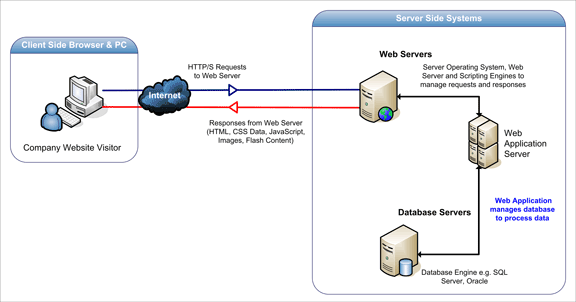Web Application
Web Application
We provide customize Web Application Development services with the latest technology to suit your requirement that help increasing work efficiencies and reduces working costs.
Get Quote
A Web application (Web app) is an application program that is stored on a remote server and delivered over the Internet through a browser interface or utilizes web browsers and web technology to perform tasks over the Internet.

A web application is any software that runs in a web browser. It is created in a browser-supported programming language (such as the combination of JavaScript, HTML and CSS) and relies on a web browser to render the application. Web application is a client–server software application in which the client (or user interface) runs in a web browser. Common web applications include webmail, online retail sales, online auctions, wikis, instant messaging services and many other functions. Web apps have several advantages over desktop applications. Since they run inside web browsers, developers do not need to develop web apps for multiple platforms. For example, a single application that runs in Chrome will work on both Windows and OS X. Developers do not need to distribute software updates to users when the web app is updated. By updating the application on the server, all users have access to the updated version.
How do web applications work?
The three-layered web application model. The first layer is normally a web browser or the user interface; the second layer is the dynamic content generation technology tool such as Java servlets (JSP) or Active Server Pages (ASP), and the third layer is the database containing content (e.g., news) and customer data (e.g., usernames and passwords, social security numbers and credit card details).Web applications are usually coded in browser-supported language such as JavaScript and HTML as these languages rely on the browser to render the program executable. Some of the applications are dynamic, requiring server-side processing. Others are completely static with no processing required at the server. The web application requires a web server to manage requests from the client, an application server to perform the tasks requested, and, sometimes, a database to store the information. Application server technology ranges from ASP.NET, ASP and ColdFusion, to PHP and JSP.

Here’s what a typical web application flow looks like:
- User triggers a request to the web server over the Internet, either through a web browser or the application’s user interface
- Web server forwards this request to the appropriate web application server
- Web application server performs the requested task – such as querying the database or processing the data – then generates the results of the requested data
- Web application server sends results to the web server with the requested information or processed data
- Web server responds back to the client with the requested information that then appears on the user’s display.
BENEFITS OF A WEB APPLICATION
- Web applications run on multiple platforms regardless of OS or device as long as the browser is compatible
- All users access the same version, eliminating any compatibility issues
- They are not installed on the hard drive, thus eliminating space limitations
- They reduce software piracy in subscription-based web applications (i.e. SaaS)
- They reduce costs for both the business and end user as there is less support and maintenance required by the business and lower requirements for the end user’s computer.

